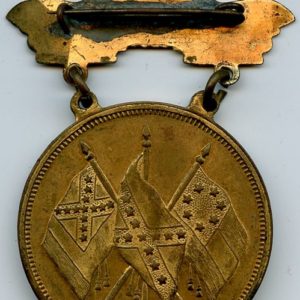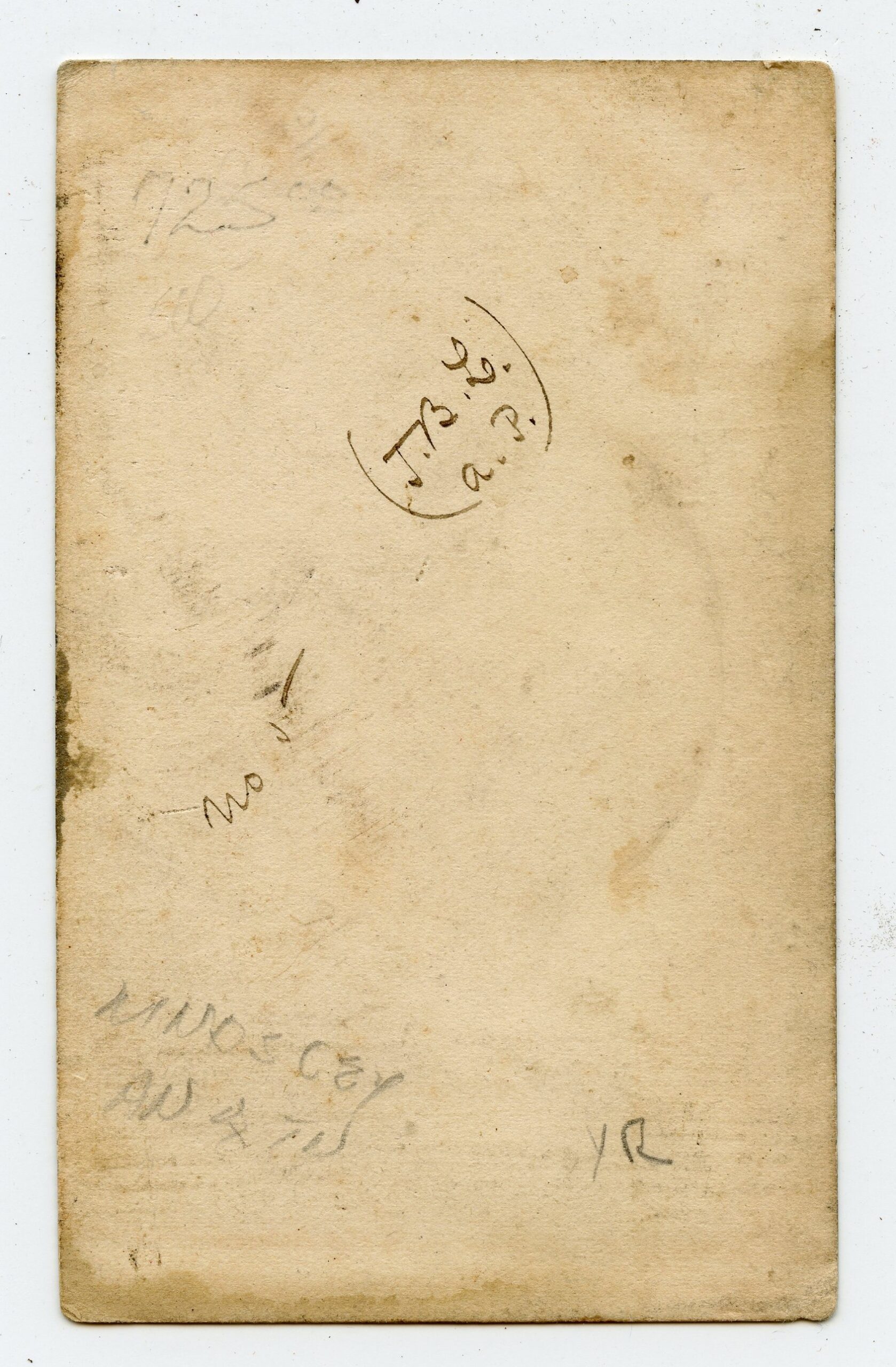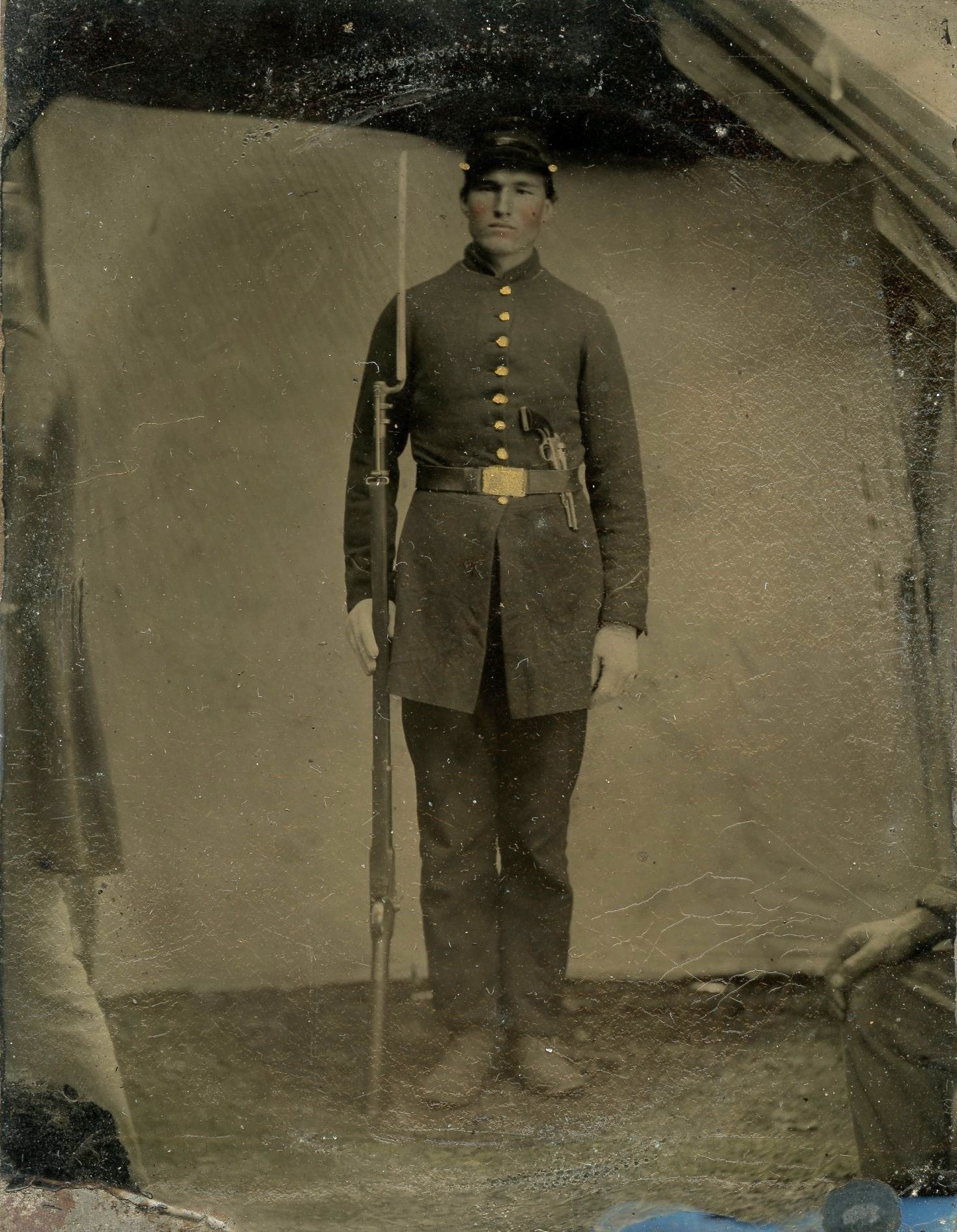-

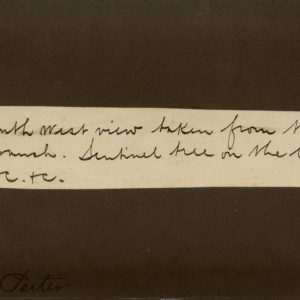 Availablity
AvailablityOut of stock
Andersonville (or Camp Sumpter as it was known) Prison was built in early 1864 in order to move the large number of Federal prisoners in and around Richmond to a place of greater security and more abundant food. The prison was surrounded by a stockade of logs with sentry boxes… -
 Availablity
AvailablityOut of stock
This quarter plate tintype of a triple armed Union cavalryman was taken at Benton Barracks with the iconic cannon/mortar/flag backdrop. The cavalryman is in full standing pose with his unsheathed sword pointed to the ground. A Burnside carbine is at his side on the carbine sling. The sling buckle is… -
 Availablity
AvailablityOut of stock
This sixth plate tintype is loaded with content. A pair of cavalrymen are standing in front of the Benton Barracks “Fort on the Hill” backdrop. They are fully displaying their cavalry sabres out of the scabbards in one hand and are holding short rifles or muskets, rather than carbines, in… -

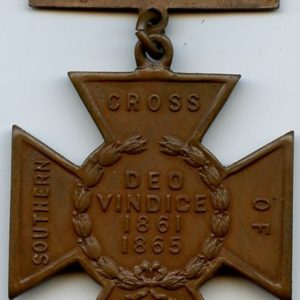 Availablity
AvailablityOut of stock
At the November 1899 United Daughters of the Confederacy (UDC) convention in Richmond, Virginia, a design was approved for a cross of honor for valor and patriotism to be bestowed on Confederate veterans. This cross is known as the Southern Cross of Honor. The cross is in the form of… -

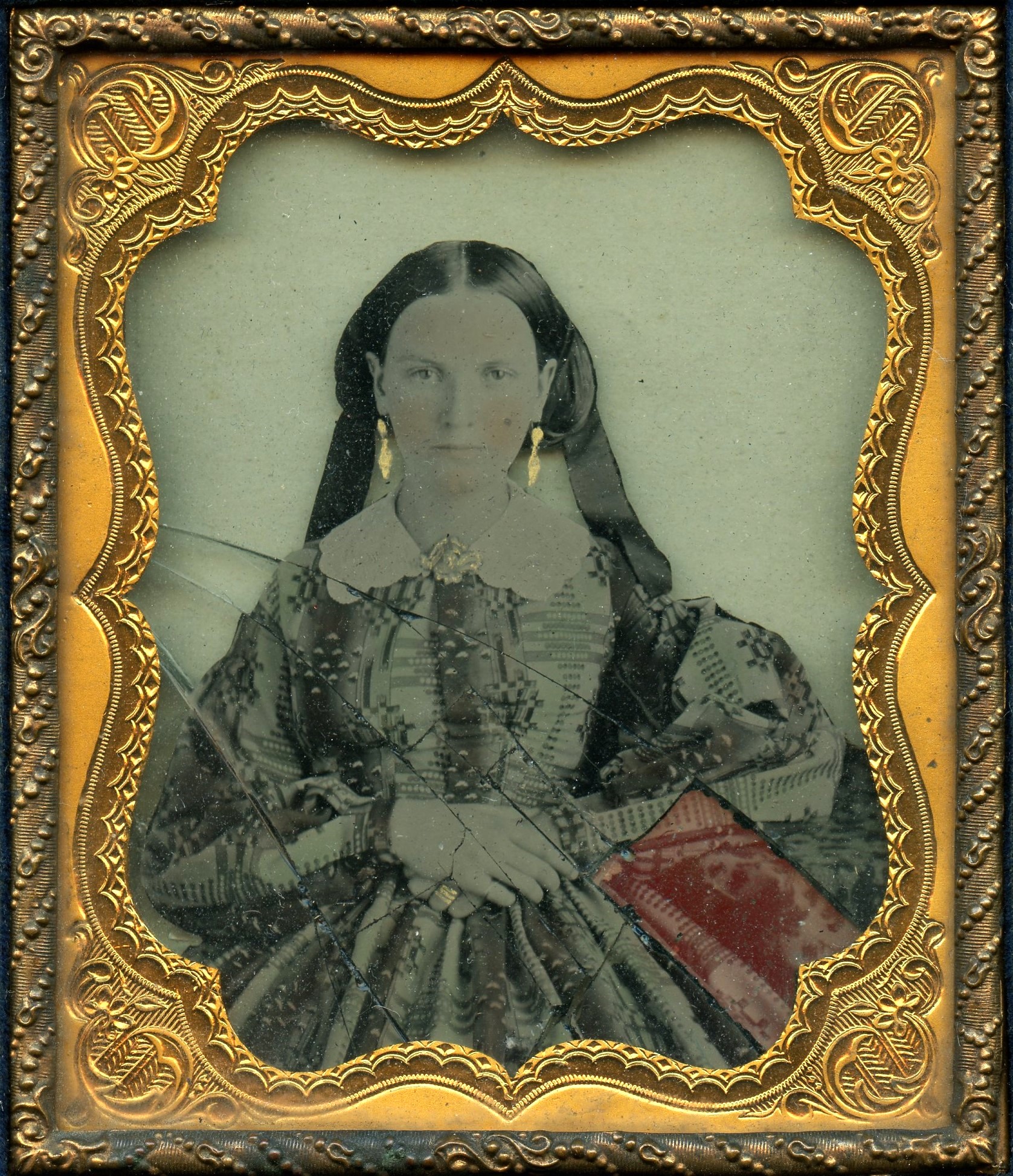 Availablity
AvailablityOut of stock
Ambrotypes, 6th plate William W. Chenault was a 25-year-old physician when he enlisted at Catawba Co. North Carolina as a Captain on March 19, 1862. He was commissioned into Co. I (Catawba Marksmen), 49th North Carolina Infantry on April 16, 1862. The regiment’s colonel was future Confederate general Stephen Dodson… -

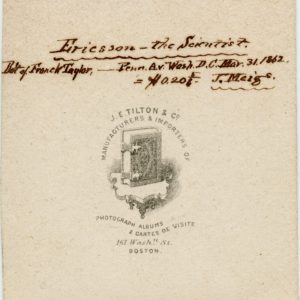 Availablity
AvailablityOut of stock
Very nice condition CDV of John Ericcson, of Monitor fame. Verso is marked J. E. Tilton & Co., Boston. Of major significance is the period pen marking, “Ericsson – the Scientist, Bo’t of Franck Taylor, Penn. Av. Wash. D.C. Mar. 31, 1862. = H0.20F. J. Meigs.” J. Meigs was John… -
 Availablity
AvailablityOut of stock
This uncommon CDV size image depicts a standing Union cavalry soldier with his sabre fully displayed in the scabbard. He is wearing a cavalry shell jacket with nicely gilded trim and buttons. His belt has a gilded sabre belt plate and cap box. The image has a three-dimensional look to… -
 Availablity
AvailablityOut of stock
This fine sixth plate ambrotype depicts a serious Confederate soldier in an octagonal case. He is posed seated while presenting his model 1816 conversion musket. His uniform is well-tailored and is likely standard for his company. The buttons are gilded. His forage cap has letters which likely designate his unit,… -

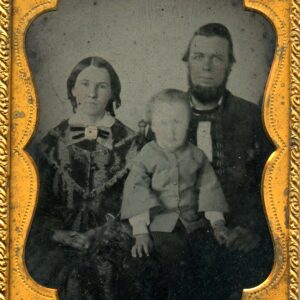 Availablity
AvailablityOut of stock
Extremely nice sixth plate ambrotype of a Confederate from the Peyton and Grimes families. The image has the earmarks of an unsigned Rees. It is painted on the back in the relievo style, as Rees did many times. The glass is roughly cut and displays the remains of paper seals,… -
 Availablity
AvailablityOut of stock
This exceptional half plate ruby ambrotype depicts a determined Confederate soldier with a very serious look about him. He is seated in front of a plain backdrop which looks like part of an itinerant photographer’s studio. He is wearing a plain single-breasted frock coat with contrasting cuffs, and trousers with… -

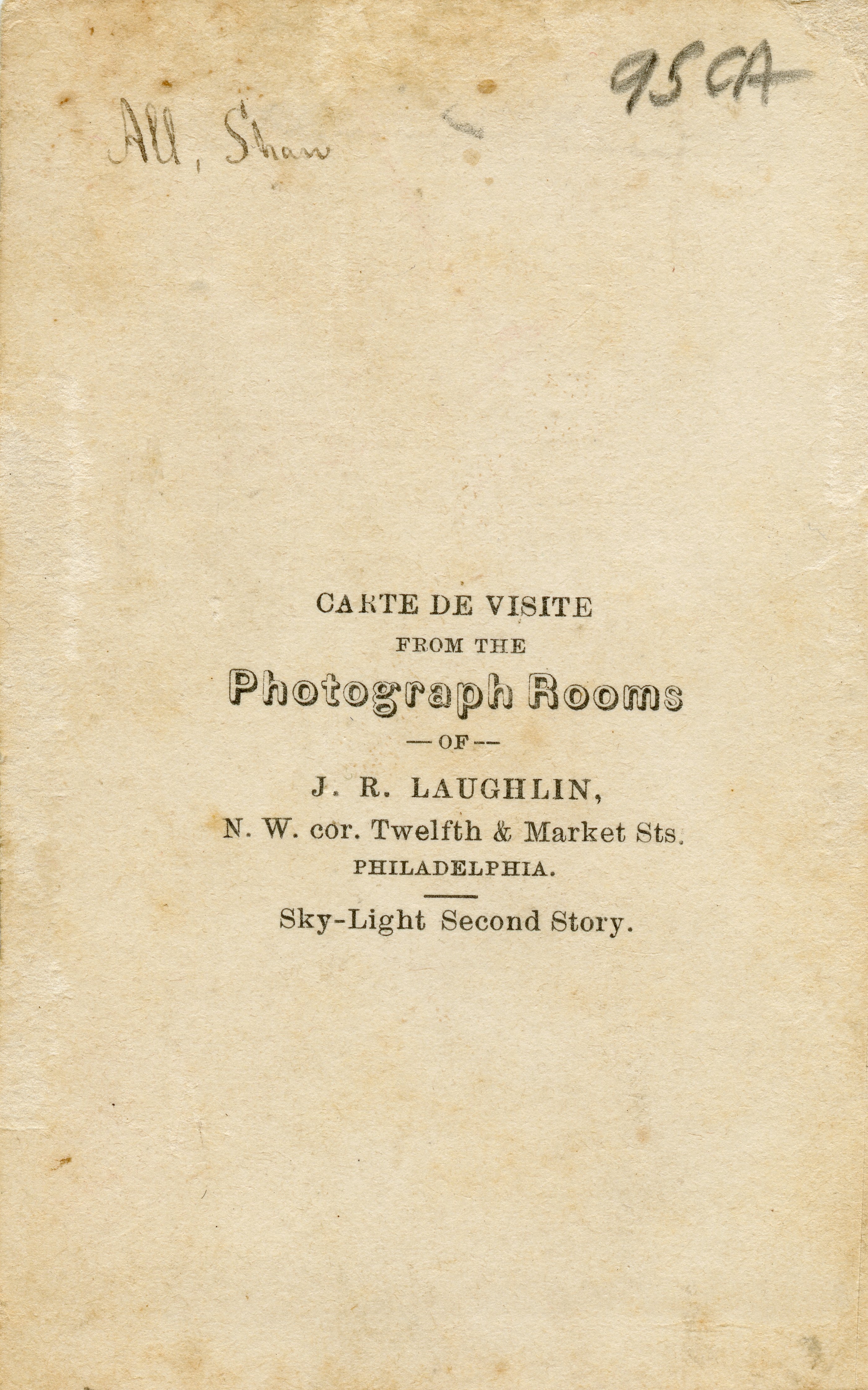 Availablity
AvailablityOut of stock
Cornet bands were popular during the Civil War. The instrumentation consisted of varying types of brass instruments collectively referred to as cornets. The bands were usually supported by a snare and bass drum. This nicely hand colored Carte de Visite depicts a musician in a Cornet band standing with his… -
 Availablity
AvailablityOut of stock
This sixth plate Confederate ambrotype features some great content. The soldier is posed with his weapons held up in each hand for all to see. He is obviously ready for a fight. Prominently displayed is the large D guard Bowie knife with gilded guard. He has a Colt revolver in… -
 Availablity
AvailablityOut of stock
Beautiful sixth plate clear glass ambrotype of a Union corporal armed with a small percussion boot pistol and Sheffield style knife in his belt. He is wearing a frock coat with nicely tinted corporal stripes on the sleeves, blue for infantry. His Hardee hat is decked out with an infantry… -
 Availablity
AvailablityOut of stock
Beautiful sixth plate tintype of a Union sergeant armed with what looks like a Model 1816 conversion musket. The double strapped front barrel band and buttonhead ramrod are strong clues. He has a Smith & Wesson Model #1 revolver tucked into his belt, which has a cap box and bayonet… -

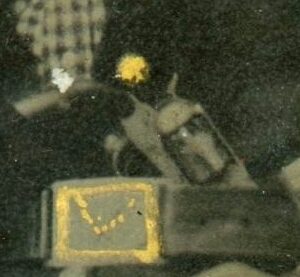 Availablity
AvailablityOut of stock
The Union soldier in this sixth plate tintype is double armed with a pistol and bayonet in his belt. The pistol is quite uncommon in a civil war image, as it is a Marston pocket revolver. The Marston Pocket Model Revolver was a 31 caliber 5-shot percussion revolver with walnut… -
 Availablity
AvailablityOut of stock
Daguerreotype and Ruby Ambrotype, 9th plate Very nice ruby ambrotype of a soldier from the first or second New Hampshire. The daguerreotype is of the same individual as a younger man. The uniform was issued to the first and second New Hampshire and consisted of a gray wool swallow-tail coat… -

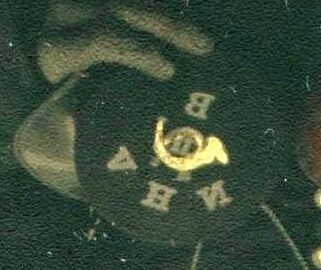 Availablity
AvailablityOut of stock
This sixth plate tintype depicts a classically posed New Hampshire soldier displaying his regiment and company insignia on the top of his kepi. The soldier is first sergeant John E. Cram of Co. B, 11th New Hampshire Volunteer Infantry. His sergeant stripes and part of the lozenges representing a first… -

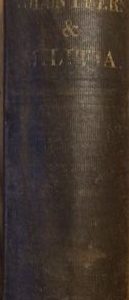 Availablity
AvailablityOut of stock
William Gilham was an 1840 graduate of West Point who fought in the Seminole and Mexican wars. Desiring to be an educator, he joined the faculty of the Virginia Military Institute in 1846. At VMI, Gilham developed the departments of Chemistry and Agriculture, taught infantry tactics and served as the…

